"They made a good first impression, but I have no faith in the fighting ability inherent in the race." This was what General Patton said after reviewing the 761st Tank Battalion in 1944, on the eve of its baptism of fire. The famous soldier did nothing but reflect the general opinion of the American commanders about the ability of African-American soldiers who had joined the army in the context of World War II, which led to bringing them together in a segregated unit. But they had an expressive motto, "Go out to fight", and they put it into practice so effectively that they received more than three hundred decorations, living up to their nickname of Black Panthers (Black Panthers).
The truth is that Patton, like many others, had somewhat contradictory feelings. That phrase reviewed earlier had the racist overtones typical of that time and, in fact, it not only persisted in that sense by making pejorative comments towards blacks as soldiers but he also put it in writing in his book War as I knew it , a war memoir in which he recalled the episode, adding that «a colored soldier cannot think fast enough to fight in an armored car». However, when he was a garrison commander in El Paso before the war, he prevented the lynching of a colored soldier and in 1944 he needed whatever reinforcements he could get; so he gave the 761st a vote of confidence.
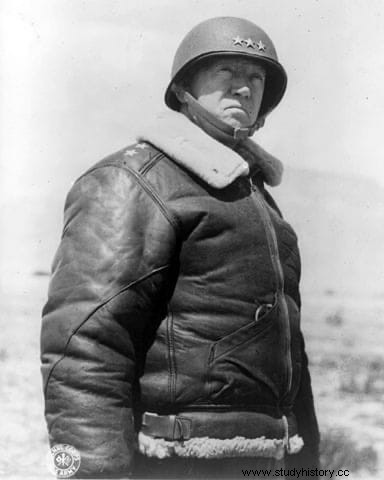
In the aforementioned troop magazine, he even dedicated an emotional harangue:
In other words, Patton distrusted African Americans as a group but, at the same time, he was willing to recognize them as good soldiers individually and, being short of troops, he could not afford to do without them, so he was the first command to integrate them among theirs. Later, they declared that they were proud to have served under him. It was the emergence of a somewhat anomalous situation, the prohibition of black troops from entering combat. Anomalous because, in reality, they had already been used for the first time in the Civil War, when the first unit of this type, the 1st Kansas Colored Volunteer Infantry Regiment , mainly made up of ex-slaves, was also the first to fight on the front lines, in the so-called Island Mound Skirmish (October 29, 1862).
Likewise, black soldiers were part of the 54th Massachusetts (immortalized in the movie Times of glory ) and the 10th Cavalry Regiment. Those of the latter were known as Buffalo Soldiers (the Kiowa probably named it because of its curly hair, which reminded them of bison), a name that was later also applied to other regiments of what was known generically as the United States Colored Troops. They took part in the Indian Wars and in the war against Spain in 1898, as well as in the intervention in Mexico in 1916 and in the campaigns against the Philippine insurgency. On the other hand, they did not participate in the First World War because in the 20th century, with the exceptions mentioned, they were assigned to service tasks.
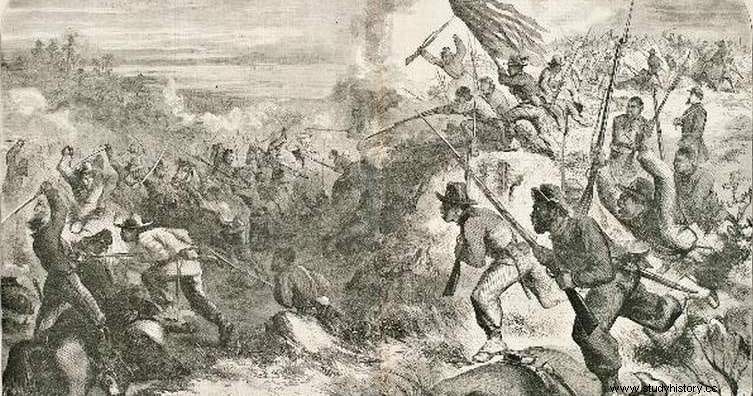
When the Second began to glimpse, the initial situation was similar. On the part of the commanders, there were still reservations that were not resolved until, once the war had begun, Lieutenant General Lesley James McNair changed things. McNair is often nicknamed the "architect of the US Army" because as the Supreme Commander of the Ground Forces, he was the one who designed and reorganized it to adapt to the new and terrible times. For example, he established the individual replacement system for the fallen, introduced realistic training methods, and applied the concept of mobile versus static warfare that characterized the earlier conflict.
Well, McNair understood that the army should have black soldiers in proportion to their number in the population and ordered that segregated units be created in each branch of service, in addition to opening the door for its members to be promoted to officers and direct said units. . The reason they were created separately was that it was believed that the poor education their officers had received at school made them lag behind the whites (although sometimes there were not enough colored officers and the ranks had to be completed precisely with white). Therefore, the initial proposal of the General Staff to distribute them among the existing corps with a ratio of one black soldier for every 10.6 whites was rejected.
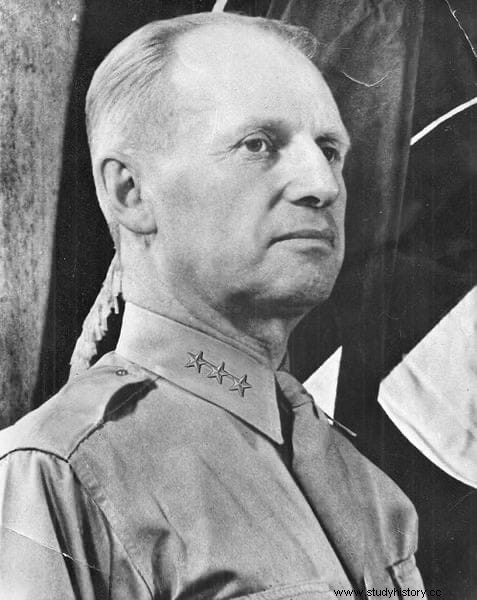
These revolutionary measures became a reality in 1941, publicized in the national media, so that two years later there were some 170,000 African Americans in the ranks, 10.5% of the total army and equivalent to 10 or 11% of the American population. . They were divided between the 90th and 92nd “colored” Infantry divisions, as they said then, plus the 2nd Cavalry, the 452nd Anti-Aircraft Artillery Battalion, the 555th Parachute Infantry and the one we are dealing with here, the 761st Tank Battalion. This was established on March 15, 1942, starting up the following month at Camp Claiborne, a 93 square kilometer camp located in Louisiana and dedicated since 1930 to the instruction and preparation of troops.
Recruits from the 761st trained with the M5, a domestically-built light tank model dubbed the Stuart named after Confederate General Jeb Stuart and was armed with a 37mm cannon. plus three Browning M1919 machine guns. The final stage of the preparation period took place at Fort Hood, another army installation - also named after a Confederate military man - and located in Texas. There they went on to learn how to drive a medium tank, the M4 Sherman -this time the name was a northern general- who had a 75 mm cannon, three machine guns of different calibers and a two-inch mortar.
As can be seen, both bases were in the south, where segregationist laws persisted, and there were no shortage of incidents in this regard, both with the local population and with the officers and soldiers of other units, to the point that, after a mass fight between whites and blacks of different bodies that occurred in Louisiana on January 10, 1942, the members of the 761st were about to mutiny and seize half a dozen battle tanks and only the intervention of their colonel, Paul L. Bates prevented. It was also he who refused to court-martial a black officer who did not want to sit in the back of a bus and was therefore arrested by the military police at Fort Hood. His name was Jackie Robinson and despite the defense of his superior he ended up appearing before a court martial; he was acquitted but he was forced to leave the 761st… to become one of the great stars of US baseball. He never forgot the support of the lieutenant colonel.
However, what really angered the Black Panthers it was the fact that units with much less training but made up of whites were sent to the front, while they continued to wait. But finally the time has come. General Benjamin Lear (nicknamed Yoo-Hoo because of the joking whistles that the recruits gave him when they passed by truck and saw him play golf in shorts), who was in command of the Second Army and engaged in training, considered that the 761st was ready for combat , so he sent him to England, where the invasion of the continent was being planned. And, indeed, on October 10, 1944, African-American soldiers landed on Omaha Beach, that Normandy beach whose sands had been watered with blood four months earlier.
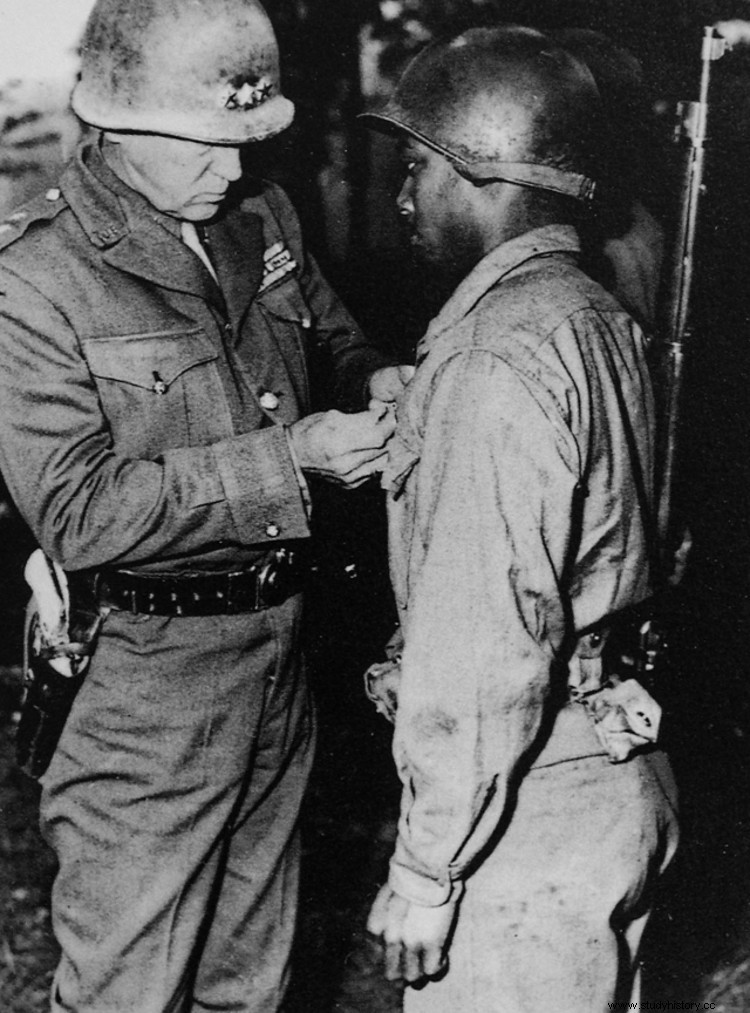
There were 676 men with thirty black and six white officers who were assigned to the US Third Army, whose command had passed from General Walter Krueger to Patton. This one, as we have already seen, needed reinforcements, so after reviewing the troops that we mentioned before and despite his misgivings, he agreed to incorporate the 761st. They entered the fray on November 7, fighting in successive French cities such as Moyenvic, Vic-sur-Seille or Morville-lès-Vic, almost always at the forefront. Ironically, the first wounded they had was not black but his boss, Colonel Bates.
But his true consecration was the following month, when the Germans unleashed the Ardennes offensive. They played an important role in it because the warning was received that the enemy had detachments disguised in US uniforms to infiltrate and disrupt the surveillance posts. Patton solved the problem by assigning black soldiers to these checkpoints, with orders to fire on any suspicious targets. The Battle of the Bulge was hard and bloody:the 761st recorded 156 casualties, of which 24 were fatal due to 81 wounded and another 44 due to illness. They also lost 14 tanks and another twenty were damaged.
Once its mission was accomplished and given its character as a replacement unit -for which it was sent where help was needed-, the 761st went to Bastogne with the mission of helping the members of the 101st Airborne Division, who resisted as tenaciously as possible. desperately in harsh weather conditions. The German offensive ended in failure on January 25, 1945 and the Black Panthers they continued forward as the spearhead of the US 4th Armored Division, charged with leading the Third Army into Germany through the Siegfried Line .
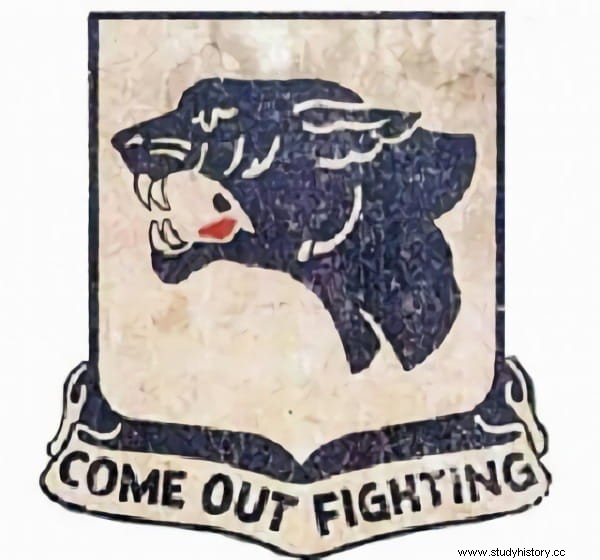
Thus they arrived at Steyr, a town in Austria where they linked up with the Red Army. The numerous displays of courage displayed by those soldiers, who were on campaign for 183 uninterrupted days, earned them 296 purple hearts, 11 silver stars and 69 bronze stars, plus a Medal of Honor given to Bates, who was able to recover from his wounds (there were other posthumous ones for Sergeant Ruben Rivers and Private Warren GH. Crecy, the latter sarcastically nicknamed "The Baddest Man in 761" ).
In 1978, Jimmy Carter heeded the demands of several veterans and awarded the battalion the Presidential Unit Citation "for extraordinary heroism in action" . It was a demand of many veterans who, upon returning to their homeland, found that they were not received as warmly as whites. However, his behavior on the front lines was so convincing that Truman ordered an end to segregation in the military. In this way the 761st Tank Battalion was dissolved and its members integrated into other units.
